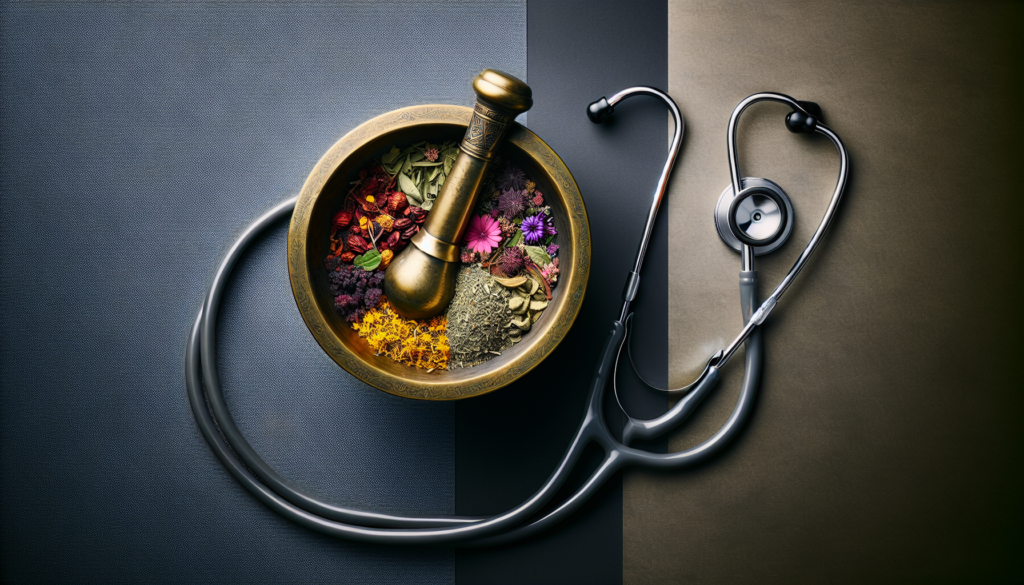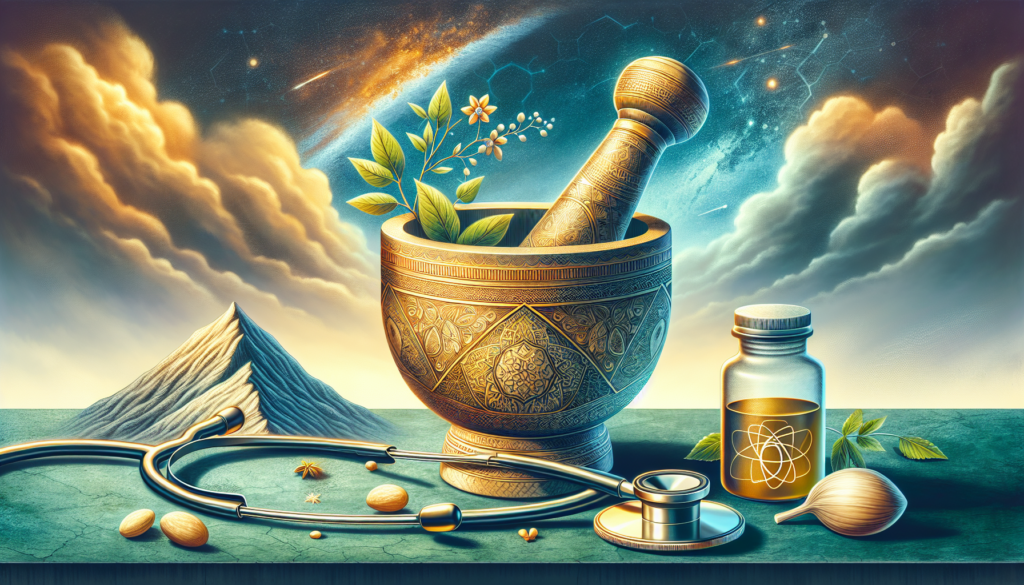Traditional Persian Medicine differs from Western medicine in several key ways. While Western medicine primarily focuses on treating symptoms and curing diseases, Traditional Persian Medicine takes a more holistic approach, emphasizing the balance between mind, body, and soul. Additionally, Traditional Persian Medicine places a greater emphasis on preventive measures and believes in the power of natural remedies and herbal treatments. By understanding the fundamental differences between these two medical systems, individuals can make more informed decisions about their health and well-being.
Overview
Traditional Persian Medicine (TPM) is an ancient holistic healthcare system that has its roots in ancient Persia (modern-day Iran). It is a comprehensive system of medicine that focuses on maintaining balance within the body to promote overall well-being. TPM takes a more holistic approach to health, considering the interconnectedness of the body, mind, and spirit. This article will explore the historical background, philosophical foundations, diagnostic methods, treatment modalities, and the integration of TPM with modern medicine.
Historical Background
Ancient Roots
The foundation of TPM can be traced back thousands of years to ancient Persia. It was heavily influenced by the teachings of renowned Persian physician Avicenna, who lived during the Islamic Golden Age. Avicenna’s book, “The Canon of Medicine,” was a landmark in medical literature and had a profound impact on the development of TPM. Ancient Persian texts and manuscripts such as the “Karnameh” and “Kamal Al-Sanaat” also played a critical role in shaping TPM.
Influence of Islamic Golden Age
During the Islamic Golden Age, which occurred from the 8th to the 14th century, Persia was a hub of intellectual exchange. Scholars, physicians, and philosophers from various cultures and traditions came together to share knowledge. Persia became a center for medical advancements and innovations, with many of these discoveries contributing to the principles and practices of TPM. The influence of the Islamic Golden Age can still be seen in the philosophy and techniques of TPM today.

Philosophical Foundations
Holistic Approach
One of the fundamental principles of TPM is its holistic approach to health. It recognizes that the body is interconnected, and any imbalance in one area can affect the entire system. TPM considers physical, mental, emotional, and spiritual aspects of an individual when diagnosing and treating health conditions. This holistic approach aims to restore balance and harmony within the body, which is essential for overall well-being.
Balance of Four Elements
TPM is based on the belief that the body is composed of four elemental qualities: earth, air, fire, and water. Each element represents different characteristics and functions within the body. An imbalance in these elements can lead to various health issues. TPM focuses on restoring the balance of these elemental qualities through various treatment modalities and lifestyle changes.
Seven Principles of Treatment
The seven principles of treatment in TPM are an important guiding framework for practitioners. These principles include “preventing disease,” “strengthening the body’s healing power,” “eliminating the cause of the disease,” “reducing the symptoms,” “correcting the temperament,” “regulating lifestyle,” and “maintaining a healthy emotional state.” By adhering to these principles, TPM aims to address the root causes of illness and promote long-lasting healing.
Diagnostic Methods
Pulse Diagnosis
Pulse diagnosis is a vital diagnostic method in TPM. Practitioners assess the quality, rhythm, and strength of the pulse to gather information about the patient’s overall health and specific imbalances. Different pulse patterns are associated with specific organs and body systems, allowing practitioners to identify underlying conditions and imbalances. This information guides the treatment approach and helps restore balance within the body.
Urine Analysis
Urine analysis is another diagnostic method used in TPM. The color, odor, and consistency of urine provide valuable insights into an individual’s health. Practitioners analyze these characteristics to identify imbalances and potential issues within the body. By detecting abnormalities or imbalances, appropriate treatments and lifestyle recommendations can be suggested to restore health and well-being.
Observational Diagnosis
Observational diagnosis is a comprehensive assessment of an individual’s physical appearance, including the face, tongue, skin, and eyes. This diagnostic method allows practitioners to identify signs and symptoms associated with different imbalances and diseases. Changes in complexion, tongue coating, or clarity of the eyes can provide valuable information about the patient’s health status. Observational diagnosis complements other diagnostic methods and helps paint a holistic picture of the individual’s health.

Treatment Modalities
Herbal Medicine
Herbal medicine is a cornerstone of TPM. The selection and combination of herbs are based on the patient’s individual needs and the specific imbalance being treated. Herbs are used to restore balance, boost the immune system, and address underlying causes of illness. TPM recognizes the importance of herbal synergy and often combines multiple herbs to enhance their effectiveness. Herbal medicine in TPM has a long-standing tradition and continues to be a widely used treatment modality.
Diet and Nutrition
Diet and nutrition have a significant impact on health in TPM. Food is categorized based on its elemental qualities and effects on the body. TPM recognizes the importance of consuming a balanced diet that supports the body’s natural healing processes. Seasonal and individual variations are taken into account when creating dietary recommendations. Emphasis is placed on proper digestion and absorption of nutrients, as this is essential for maintaining optimal health.
Cupping and Bloodletting
Cupping therapy and bloodletting have been used in TPM for centuries. Cupping involves creating suction on specific points or areas of the body, promoting blood flow and releasing toxins. It is believed to remove stagnation, improve circulation, and alleviate pain. Bloodletting techniques, such as venesection or leech therapy, are used to remove excess blood, toxins, or pathogens from the body. Both cupping and bloodletting play a vital role in restoring balance and promoting overall well-being.
Manual Therapies
Manual therapies, such as manipulative techniques, massage, and acupressure, are commonly used in TPM. These therapies aim to stimulate the body’s natural healing mechanisms, promote relaxation, and alleviate pain. Manipulative techniques involve gentle movements and joint mobilization to correct imbalances and restore proper function. Massage and acupressure techniques target specific points and meridians to stimulate energy flow and promote overall wellness.
Mind-Body Interventions
TPM recognizes the intimate connection between the mind and body. Mind-body interventions, such as meditation, breathing exercises, and relaxation techniques, are important components of TPM. These practices help reduce stress, improve mental clarity, and promote emotional well-being. By addressing the mental and emotional aspects of health, TPM aims to create a balanced and harmonious state within the individual.
Herbal Medicine
Selection and Combination of Herbs
The selection and combination of herbs in TPM are based on the individual’s specific needs and the underlying imbalances being addressed. Practitioners consider the elemental qualities of herbs, their medicinal properties, and their compatibility with other herbs. The goal is to create a formula that restores balance and addresses the root cause of the illness. Herbal synergy is highly valued in TPM, as it enhances the efficacy and safety of the treatment.
Preparation and Administration
Herbs in TPM can be prepared and administered in various forms, including decoctions, powders, and pills. Decoctions involve boiling the herbs in water to extract their active constituents. Powders are ground herbs that can be mixed with water or other substances for consumption. Pills or tablets are convenient forms of administration. The preparation and administration methods depend on the specific herb and the desired therapeutic effect.
Use of Animal Products
In TPM, animal products are occasionally used alongside herbal medicine. Animal-based substances such as honey, milk, and eggs may be included in herbal formulas to enhance their therapeutic effects. These animal products are chosen based on their medicinal properties and compatibility with the herbs being used. The use of animal products is guided by ethical considerations and the principles of sustainable and responsible sourcing.

Diet and Nutrition
Food Classification
In TPM, foods are classified based on their elemental qualities, taste, and effect on the body. This classification helps individuals make informed dietary choices that promote balance and well-being. Foods are categorized as hot or cold, moist or dry, and their taste can be sweet, sour, bitter, salty, or pungent. The elemental qualities and tastes of foods are taken into account when creating personalized dietary recommendations.
Seasonal and Individual Variations
TPM recognizes the importance of adjusting the diet according to seasonal and individual needs. Different seasons require different dietary approaches to maintain balance. For example, lighter and cooling foods are recommended during the summer, while warmer and nourishing foods are advised during the winter. Additionally, individuals have different constitutional needs, and dietary recommendations are tailored to their unique requirements.
Emphasis on Digestion and Absorption
TPM places great emphasis on proper digestion and absorption of nutrients. The digestive system is seen as the foundation of health, and imbalances in digestion can lead to various health issues. TPM encourages mindful eating, proper food combinations, and avoiding foods that can impair digestion. By promoting optimal digestion and absorption, TPM supports overall health and well-being.
Cupping and Bloodletting
Cupping Therapy
Cupping therapy is a traditional practice used in TPM to promote healing and restore balance. It involves placing cups on specific points or areas of the body to create suction. This suction stimulates blood flow, removes stagnation, and improves the flow of vital energy (Qi) in the body. Cupping therapy is believed to alleviate pain, reduce inflammation, and improve circulation. It is commonly used for musculoskeletal conditions, respiratory disorders, and general well-being.
Bloodletting Techniques
Bloodletting techniques, such as venesection or leech therapy, are used in TPM to remove excess blood, toxins, or pathogens from the body. This practice aims to rebalance the humors and restore optimal health. Bloodletting is performed by trained practitioners and should always be done with caution and proper hygiene. It is considered a therapeutic intervention that can be beneficial for specific conditions when applied correctly.

Manual Therapies
Manipulative Techniques
Manipulative techniques are an integral part of TPM’s approach to healing. These techniques involve gentle movements and joint mobilization to correct imbalances in the musculoskeletal system. By restoring proper alignment and function, manipulative techniques can alleviate pain, improve range of motion, and promote overall well-being. Skilled practitioners utilize these techniques in conjunction with other treatment modalities for comprehensive care.
Massage and Acupressure
Massage and acupressure are widely utilized manual therapies in TPM. Massage techniques involve the manipulation of soft tissues, such as muscles and fascia, to stimulate blood flow, relieve tension, and promote relaxation. Acupressure, on the other hand, targets specific points along meridians to restore the flow of vital energy (Qi) in the body. Both massage and acupressure are known to have a positive impact on physical and mental well-being.
Integration with Modern Medicine
Complementary Approach
TPM is often used in conjunction with modern medicine, adopting a complementary approach to treatment. It recognizes the value of both traditional and modern medical practices and aims to integrate the best of both worlds. TPM can provide an additional layer of support and focus on promoting overall well-being while modern medicine addresses specific conditions or emergencies. This approach allows individuals to benefit from a comprehensive and holistic healthcare experience.
Collaborative Initiatives
In recent years, there have been collaborative efforts between TPM practitioners and modern healthcare providers. This collaboration aims to bridge the gap between traditional and modern medical systems, leading to improved patient care. Medical institutions and universities are including TPM in their curriculum, and research studies are being conducted to explore the efficacy of TPM treatments. Collaborative initiatives hold great potential for the continued growth and development of TPM.
Traditional Persian Medicine differs from Western medicine in several aspects. It takes a holistic approach, considering the interconnectedness of the body, mind, and spirit. It values the balance of the four elemental qualities and emphasizes the individualization of treatment. Diagnostic methods in TPM include pulse diagnosis, urine analysis, and observational diagnosis. Treatment modalities range from herbal medicine and diet/nutrition to cupping, bloodletting, manual therapies, and mind-body interventions. TPM also integrates with modern medicine, adopting a complementary approach and fostering collaborative initiatives.



